A nice article about the activities in the Center for Wearable Sensors appeared in the Triton Magazine, including interview excerpts with Prof. Mercier and colleagues. Read more HERE.
Five papers at ISSCC 2021!
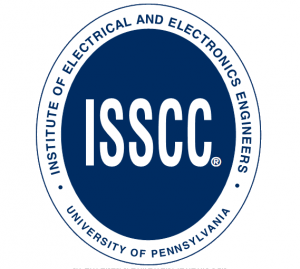 We are very excited to announce we will be presenting FIVE papers at ISSCC 2021! This brings EEMS total ISSCC paper count over the last five years to 16 (five papers in 2021, one in 2020, four in 2019, three in 2018, and three in 2017), with 22 papers total in Prof. Mercier’s career. ISSCC 2021 will feature the following papers:
We are very excited to announce we will be presenting FIVE papers at ISSCC 2021! This brings EEMS total ISSCC paper count over the last five years to 16 (five papers in 2021, one in 2020, four in 2019, three in 2018, and three in 2017), with 22 papers total in Prof. Mercier’s career. ISSCC 2021 will feature the following papers:
- Abdullah will present a paper entitled “A 98.2%-Efficiency Reciprocal Direct Charge Recycling Inductor-First DC-DC Converter”, which demonstrates how the gate charge of power MOSFETs can be recycling to help ameliorate the trade-off between switching and conduction losses in DC-DC converters, demonstrating extremely good efficiency even at low current levels, all with an inductor-first topology with good EMI properties.
- Jason will present a paper entitled “A Distortion-Free VCO-based Sensor-to-Digital Front-end Achieving 178.9-dB FoM and 128-dB SFDR with a Calibration-Free Differential Pulse Code Modulation Technique”, which improves upon his VLSI 2020 work by demonstrating how to reduce the input voltage to a VCO quantizer through a DPCM feedback technique to linearize it without requiring a gain error correction loop, demonstrating a high-impedance VCO based front-end with no measurable distortion and a very large dynamic range.
- Miao will present a paper entitled “Improving the Range of Wi-Fi Backscatter via a Passive Retro-Reflective Single-Side-Band-Modulating MIMO Array and Non-Absorbing Termination”. A collaboration with Prof. Dinesh Bharadia’s group, here we improve our Wi-Fi-compatible backscatter results by utilizing a Van Atta-based MIMO antenna array that redirects backscattered power back to the incident Wi-Fi source, all while continuing to ensure single-side-band modulation. This helps increase the range of Wi-Fi backscatter communication to 20+ meters.
- Corentin (from Prof. Drew Hall’s group) will present a paper entitled “A 400mVpp, 92.3 dB-SNDR, 1kHz-BW, 2nd-order VCO-based ExG-to-Digital Front-End Using a Multiphase Gated-Inverted Ring-Oscillator Quantizer”. In collaboration with Prof. Hall’s group, this paper utilizes a new tri-state gated ring oscillator as a VCO quantizer to reduce the effects of mismatch induced nonlinearity towards a very high input impedance ADC-direct analog front-end with large dynamic range.
- Abraham (from Prof. Gert Cauwenbergh’s group) will present a paper entitled “An Optically-Addressed Nanowire-Based Retinal Prosthesis with 73% RF-to-Stimulation Power Efficiency and 20nC-3uC Wireless Charge Telemetering”. In collaboration with Nanovision Biosciences and Prof. Cauwenbergh’s group, this paper will explore the design of a CMOS chip used to efficiently drive an optically-addressed nanowire-based retinal stimulator system, using a wireless charge telemetry approach to push feedback regulation to an external wearable and away from heat-sensitive retinal tissue.
These are exciting developments, and we look forward to sharing these results in February 2021.
Center for Wearable Sensors: Virtual Summit (FREE registration!)
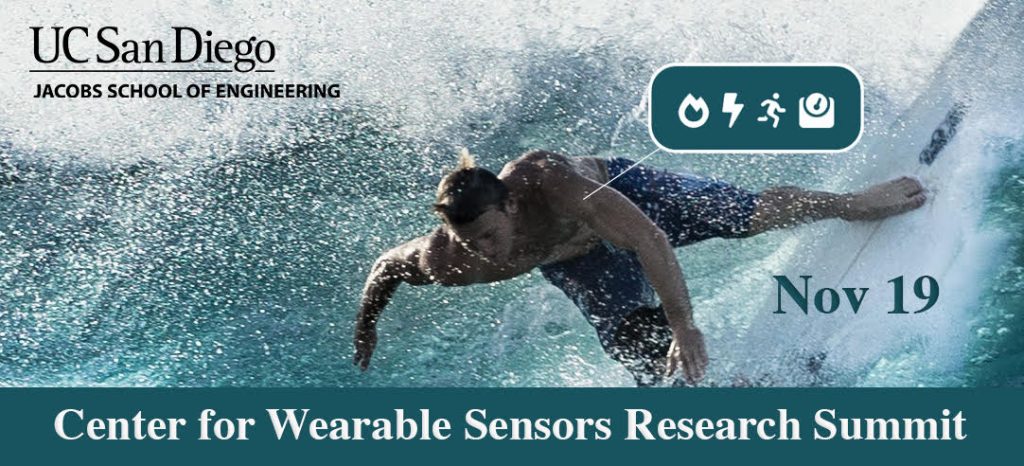
UC San Diego’s Center for Wearable Sensors, which is co-Directed by Prof. Mercier, normally has a public summit hosted once per year on UCSD campus. Due to the pandemic, we have decided to move this summit online, and are opening up registration to anyone – for free! The summit will discuss wearable flexible solar cell technology, ultra-low-power wireless communication techniques using Bluetooth Low-Energy and Wi-Fi backscatter, warfighter performance monitoring, machine learning for wearables and IoT, and microneedle array technology for lab-on-skin applications.
Please find the registration information and agenda below HERE.
IEEE Spectrum Cover Story: Why Sweat Will Power Your Next Wearable
Patrick Mercier and Joseph Wang’s work on biofuel cells and self-powered sensors is featured on the cover of the July 2020 issue of IEEE Spectrum. Check it out!
https://spectrum.ieee.org/semiconductors/devices/why-sweat-will-power-your-next-wearable
A low-power, low-cost wearable to monitor COVID-19 patients
 Engineers at the University of California San Diego are developing low-cost, low-power wearable sensors that can measure temperature and respiration–key vital signs used to monitor COVID-19. The devices would transmit data wirelessly to a smartphone, and could be used to monitor patients for viral infections that affect temperature and respiration in real time. The research team plans to develop a device and a manufacturing process in just 12 months.
Engineers at the University of California San Diego are developing low-cost, low-power wearable sensors that can measure temperature and respiration–key vital signs used to monitor COVID-19. The devices would transmit data wirelessly to a smartphone, and could be used to monitor patients for viral infections that affect temperature and respiration in real time. The research team plans to develop a device and a manufacturing process in just 12 months.
The effort is led by Patrick Mercier, a professor in the Department of Electrical and Computer Engineering at UC San Diego, and has been funded through a Rapid Response Research (RAPID) grant from the National Science Foundation.
“We desperately need a way to quantitatively triage individuals who are at high risk of carrying COVID-19, based on more than just their self-reported symptoms,” Mercier said. “In addition, those who are infected and are quarantining at home have no way of knowing how they are progressing in their recovery and/or if their symptoms are sufficient to warrant hospitalization before it may be too late. All of this is true not just for COVID-19, but for any future viral infection that may take the world by storm.”
Read more about this HERE.
Three papers at VLSI 2020
 The Energy Efficient Microsystems Lab will be presenting three papers at the 2020 VLSI Symposium. While the conference will not be in beautiful Honolulu this year due to the coronavirus pandemic, the new online format does offer an exciting way to join regardless of where you are located in the world – and without having to travel! Presentations will be made fully asynchronously for convenience across time zones.
The Energy Efficient Microsystems Lab will be presenting three papers at the 2020 VLSI Symposium. While the conference will not be in beautiful Honolulu this year due to the coronavirus pandemic, the new online format does offer an exciting way to join regardless of where you are located in the world – and without having to travel! Presentations will be made fully asynchronously for convenience across time zones.
This year, Jiannan (Jason) Huang will be presenting a paper on a VCO-based analog front-end for biopotential recording that uses a background-calibrated differential pulse code modulation approach to increase the linearity of a VCO-based quantizer. Ali Nikoofard will be presenting an RF receiver that utilizes 16-FSK modulation to close a 1km link budget while consuming less than a milliwatt; a neat N-path-filter-based demodulator will be described. Finally, Po-Han (Peter) Wang will be presenting a dual-mode Wi-Fi/BLE wake-up receiver that achieves better than -90dBm sensitivity while consuming only a few microwatts of power for a wake-up latency of 1s. These are all exciting developments in low-power and energy efficient circuits for biomedical and/or wireless communication applications. Please join us for the virtual format!
UCSD Jacobs School of Engineering Ranked in the Top-10 (US News)
 US News and World Report has just announced the 2020 Engineering Graduate School School rankings, and we are proud to say that the UC San Diego Jacobs School of Engineering is now in the top-10!
US News and World Report has just announced the 2020 Engineering Graduate School School rankings, and we are proud to say that the UC San Diego Jacobs School of Engineering is now in the top-10!
https://www.usnews.com/best-graduate-schools/top-engineering-schools/eng-rankings
This marks a sharp increase from the ranking in the ~15-16 range from when Prof. Mercier joined in 2012. UCSD Engineering is now ranked above University of Illinois (Urbana Champaign), USC, UT Austin, Texas A&M, Columbia, Cornell, UCLA, Princeton, Harvard, etc. This is a very good indication of the great and growing research program here at UC San Diego. Onward and upwards!
New chip brings ultra-low power Wi-Fi connectivity to IoT devices
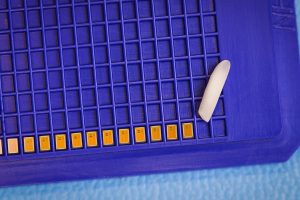 Everything needs to be online nowadays, from vending machines to smart speakers, but that connectivity costs in terms of bulk and energy use. Now researchers have come up with a chip that gets devices connected with 5,000 times less power draw than normal.
Everything needs to be online nowadays, from vending machines to smart speakers, but that connectivity costs in terms of bulk and energy use. Now researchers have come up with a chip that gets devices connected with 5,000 times less power draw than normal.
For manufacturers developing small, low-powered Internet of Things devices, that’s a significant step forward. It means that hardware can be made smaller, and use less energy, while still pinging the web for updates and information.
The chip itself is smaller than a grain of rice and consumes just 28 microwatts of power, a tiny fraction of a standard Wi-Fi radio. It can transmit data at a rate of 2 megabits a second (enough for decent quality video) at a range of up to 21 meters (69 ft).
This feat of engineering is achieved through a technique called backscattering, which encodes new data on to incoming Wi-Fi signals before transmitting them on somewhere else. This sort of piggybacking uses up far less energy, and that means a lot more flexibility for device makers.
Prof. Mercier wins Outstanding Engineer of the Year Award
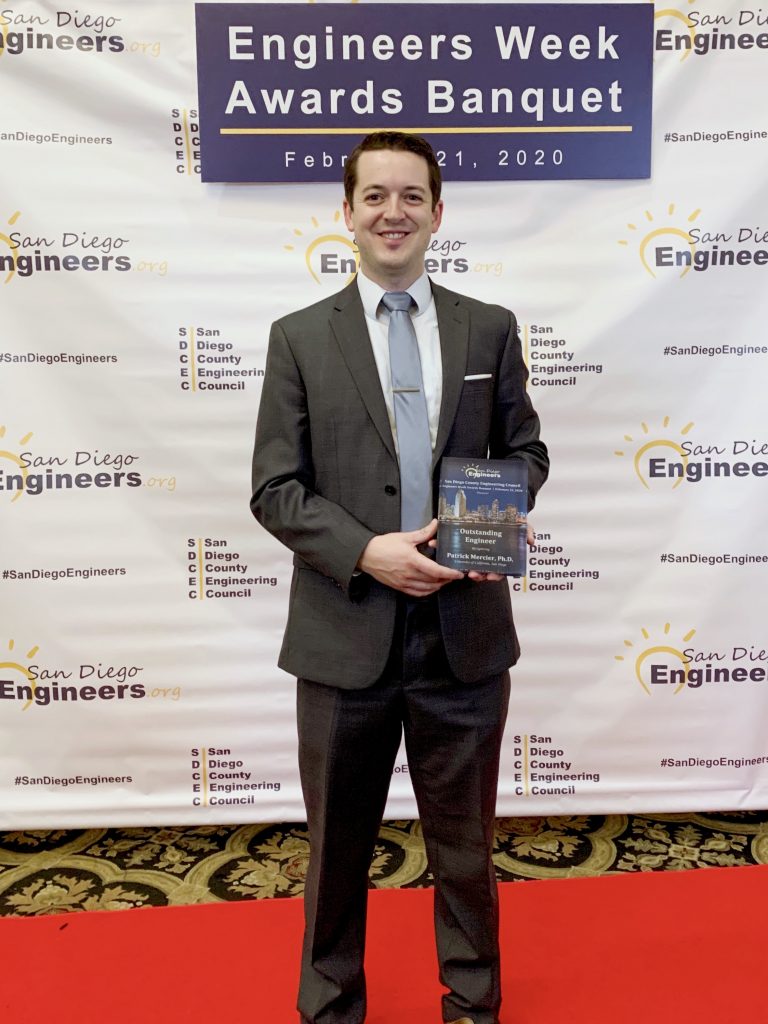 In its 69th year, the annual Engineers Week Awards Banquet, hosted by the San Diego County Engineering Council (SDCEC) on February 21, 2020, is bringing together leaders in our community to celebrate those who educate, create and advance engineering.
In its 69th year, the annual Engineers Week Awards Banquet, hosted by the San Diego County Engineering Council (SDCEC) on February 21, 2020, is bringing together leaders in our community to celebrate those who educate, create and advance engineering.
“Engineers make a difference in this world and improve people’s lives. Yet very few people know what engineers do. Engineers Week is about raising visibility of engineering. There are over 20 professional engineering society chapters in San Diego and many more student chapters. My goal is to expand their visibility and support their initiatives. The SDCEC brings the chapter leaders together to collectively plan for the future. We celebrate engineering achievements and recognize the work of local chapters and their volunteers during the Engineers Week Awards Banquet. It is also an opportunity for students and educators, exploring engineering, to meet experienced engineers and to inspire each other,” said Debra Kimberling, SDCEC President.
The 2020 winners who will be receiving the prestigious SDCEC Engineering Honor Awards are:
Outstanding Engineer of the Year Award
Patrick Mercier, Ph.D., University of California San Diego
Outstanding Engineering Educator Awards
George Youssef, Ph.D., San Diego State University
Krisztina Hagey, Hoover High School
INCOSE Co-Sponsored – Roger Dohm, Poway High School
Dr. Thomas Avolt Kanneman Outstanding Engineering Service Award
Lazaro Herrera, Success Innovations & Society of Hispanic Professional Engineers
Outstanding Leadership in Engineering
Katharine E. Baker, P.E., T.Y. Lin International, Engineers Without Borders
Outstanding Engineering Project
Athena Racing, Loxley Browne, Founder & CEO
The distinguished winners come from a variety of backgrounds, but the recurring theme is the advancement of engineering.
Professor Patrick Mercier has developed numerous groundbreaking technical advances in wearable devices, power management/energy harvesting, and near-zero-power wireless technologies for the Internet of Things. He co-founded and co-directs the Center for Wearable Sensors at UC San Diego, where he stewards academic-industry relationships and provides funding to UC San Diego faculty across engineering, medicine, and visual arts. He is active in K-12 outreach including the Hands-on-Technology summer camp and ENSPIRE.
Read more about it HERE.
ISSCC 2020: paper, tutorial, two forums, and an industry showcase
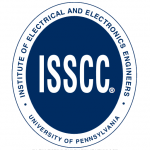 Prof. Mercier and the EEMS Lab will be very active at ISSCC 2020 this coming year!
Prof. Mercier and the EEMS Lab will be very active at ISSCC 2020 this coming year!
First – congratulations to Po-Han Wang, Hongsen Yang, and the collaboration with Prof. Dinesh Bharadia’s group, including Chi Zhang, on the upcoming paper entitled “A 28μW IoT Tag That Can Communicate with Commodity WiFi Transceivers via a Single-Side-Band QPSK Backscatter Communication Technique”. This paper will demonstrate the first chip for pragmatic WiFi-compatible backscatter, with a demonstration of communication over 10s of meters at record-setting power levels. More details of this exciting advance will be available in February 2020. This paper continues the EEMS Lab ISSCC streak at 11 papers in the last 4 years.
Prof. Mercier has multiple other activities at ISSCC 2020, including giving a tutorial on the topic of “Interface Circuits for Wearable and Implantable Sensing Systems”. He is also the co-organizer of two forums: “Power Management as an Enabler of Future SoC’s”, and “Sensors for Health”. Finally, Prof. Mercier is a co-organizer of the ISSCC 2020 Industrial Showcase, which will highlight how advances in silicon circuits, SoCs and systems are fueling the most innovative industrial applications and products of the future.
We look forward to an exciting and busy ISSCC 2020!
Cutting Edge Chip for Waking Up Small Wireless Devices Uses Only 0.000000022 Watts
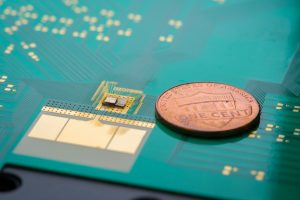 A new power saving chip developed by engineers at the University of California San Diego could significantly reduce or eliminate the need to replace batteries in Internet of Things (IoT) devices and wearables. The so-called wake-up receiver wakes up a device only when it needs to communicate and perform its function. It allows the device to stay dormant the rest of the time and reduce power use.
A new power saving chip developed by engineers at the University of California San Diego could significantly reduce or eliminate the need to replace batteries in Internet of Things (IoT) devices and wearables. The so-called wake-up receiver wakes up a device only when it needs to communicate and perform its function. It allows the device to stay dormant the rest of the time and reduce power use.
The technology is useful for applications that do not always need to be transmitting data, like IoT devices that let consumers instantly order household items they are about to run out of, or wearable health monitors that take readings a handful of times a day.
“The problem now is that these devices do not know exactly when to synchronize with the network, so they periodically wake up to do this even when there’s nothing to communicate. This ends up costing a lot of power,” said Patrick Mercier, a professor of electrical and computer engineering at UC San Diego. “By adding a wake-up receiver, we could improve the battery life of small IoT devices from months to years.”
The team, led by Mercier and UC San Diego electrical and computer engineering professors Drew Hall and Gabriel Rebeiz, published their work titled, “A 22.3 nW, 4.55 cm2 Temperature-Robust Wake-up Receiver Achieving a Sensitivity of -69.5 dBm at 9 GHz,” in the IEEE Journal of Solid-State Circuits.
Read more about the press article written about this work here.
2019 year in review: 23 papers, 4 PhDs defended, and more!
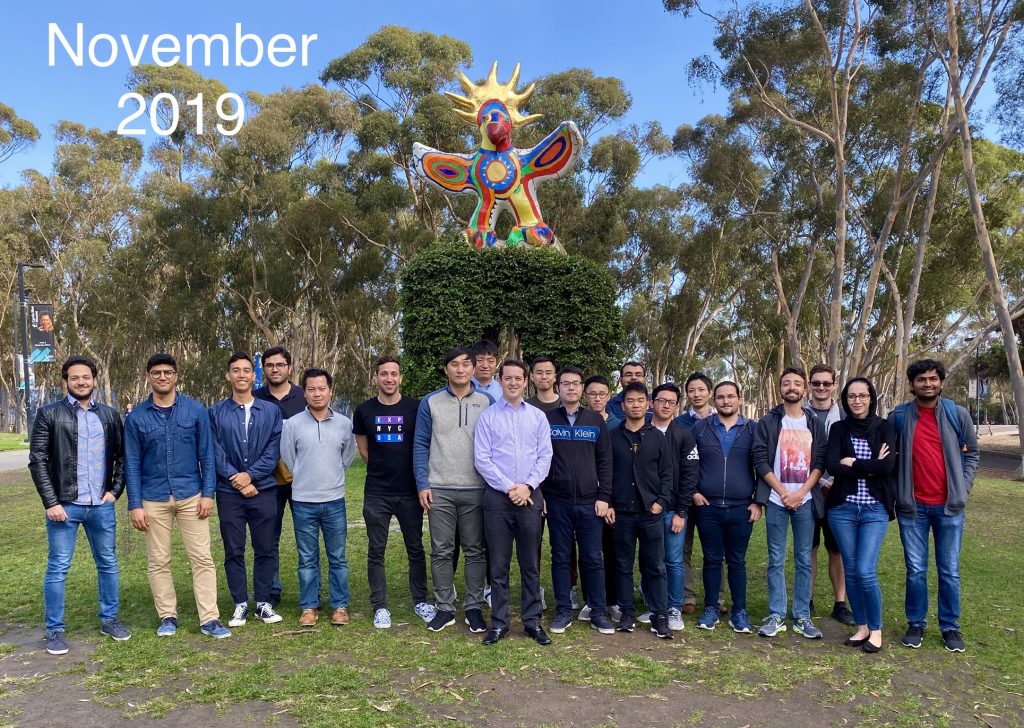 2019 was an excellent year for the Energy-Efficient Microsystems Lab! The lab was very productive, having published 23 papers this year (note: some of these journal papers were made available online in 2019, but may end up in 2020 issues), including 4 ISSCC papers – three of which were invited to special issues – and other papers in JSSC, TBioCAS, CICC, and more.
2019 was an excellent year for the Energy-Efficient Microsystems Lab! The lab was very productive, having published 23 papers this year (note: some of these journal papers were made available online in 2019, but may end up in 2020 issues), including 4 ISSCC papers – three of which were invited to special issues – and other papers in JSSC, TBioCAS, CICC, and more.
Of particular importance, 2019 saw four (successful!) PhD defenses! Congratulations to Dhon, Po-Han, Julian, and Jiwoong, who are now (or going to be) working at Qualcomm, Broadcom, Booz Allen Hamilton (contracting to DARPA), and Qualcomm, respectively. Several EEMS students also went for internship this summer, to companies like Samsung, Analog Devices, and MaXentric.
The EEMS lab also welcomed several new MS and PhD students, along with two new postdoctoral scholars, and began new funded programs with DARPA, NSF, and others. Emerging research areas are in low-power wireless (including wake-up receivers, body-area networks, and NB-IoT), continued work in developing new topologies in DC-DC converters for power management, wearable medical devices (with an emphasis on physiochemical sensing), neural interfaces, low-power yet precision analog/mixed signal circuits, and more.
In short, it was a fantastic year, and we are all looking forward to a great 2020!
IEEE Spectrum: Wireless Network Brings Dust-Sized Brain Implants a Step Closer
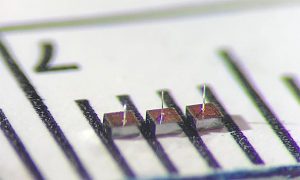 IEEE Spectrum wrote an article featuring our work on deeply sub-mm size Neurograins for next-generation monitoring and stimulation of the brain. This is a collaborative project between UCSD, Brown University, and Qualcomm.
IEEE Spectrum wrote an article featuring our work on deeply sub-mm size Neurograins for next-generation monitoring and stimulation of the brain. This is a collaborative project between UCSD, Brown University, and Qualcomm.
Brain-computer interfaces have managed some amazing feats: allowing paralyzed people to type words and move a robot using only their minds, to name two examples. Brown University neuroengineering professor Arto Nurmikko has had a hand in some of those developments, but even he says the technology is at only a rudimentary stage—the equivalent of the computer understanding the brain’s intention to bend a single finger.
“We’re trying to go from the bending-of-the-finger paradigm to tying shoe laces and even to the concert pianist level. That requires lots more spatial and temporal resolution from an electronic brain interface,” Nurmikko says. His team is hoping that kind of resolution will come along with the transition from a single, hard wired neural implant to a thousand or more speck-size neural implants that wirelessly communicate with computers outside the brain. At the IEEE Custom Integrated Circuits Conference, engineers from Brown University, Qualcomm, and the University of California San Diego presented the final part of a communications scheme for these implants. It allows bidirectional communication between the implants and an external device with an uplink rate of 10 megabits per second and a downlink rate of 1 Mb/s.
Read more HERE.
Four papers at ISSCC 2019!
 Congratulations to the EEMS students who contributed to many excellent projects in 2018, including four papers that are accepted for publication at ISSCC 2019! That’s now 10 ISSCC papers in the last three years! Details of these papers will be made available in February 2019 at ISSCC in San Francisco, CA.
Congratulations to the EEMS students who contributed to many excellent projects in 2018, including four papers that are accepted for publication at ISSCC 2019! That’s now 10 ISSCC papers in the last three years! Details of these papers will be made available in February 2019 at ISSCC in San Francisco, CA.
Prof. Mercier promoted to Associate Professor (with tenure)
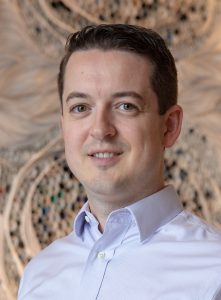
Effective July 1, 2018, Prof. Mercier has been promoted to Associate Professor (with tenure) at the University of California San Diego.
Over his career, Prof. Mercier made significant contributions to the field of near-zero-power integrated circuits, integrated power management, wearable sensors, neural implants, and more. He has published two books and 97 peer-reviewed papers, including 12 papers at ISSCC (8 as sole or lead senior author), along with papers in Nature Biotechnology, Nature Communications, JSSC, Biosensors & Bioelectronics, and more. He advises a group of >20 individuals, and has raised more than $20MM in research funds since joining UCSD. He was won numerous awards, including the DARPA Young Faculty Award, the Beckman Young Investigator Award, the NSF CAREER Award, the Biocom Catalyst Award, a Hellman Fellowship Award, and the ISSCC Jack Kilby Award for Outstanding Student Paper.
Prof. Mercier has also been recognized for excellence in teaching, receiving the campus-wide UCSD Academic Senate Distinguished Teaching Award and the ECE Department Graduate Teaching Award.
As an Assistant Professor, Prof. Mercier also distinguished himself with excellent service to UCSD and the broader community. For example, he co-founded and currently co-directs the Center for Wearable Sensors – an industry-sponsor Center supporting research in next-generation wearables across multiple schools and departments at UCSD. He also serves on the ISSCC and CICC Technical Program Committees, is an Associate Editor for TBioCAS and Solid-State Circuits Letters, and has participated in numerous outreach efforts to instill excitement in STEM-related fields to K-12 students from various backgrounds.
Congrats to Prof. Mercier!
Clinical Trial Tests Tattoo Sensor as Needleless Glucose Monitor for Diabetes Patients
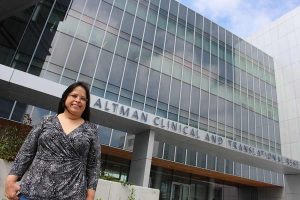
Angela Valdez was one of the first people to enroll in the SENSOR Study in hopes to one day find an alternative to finger pricking to monitor her diabetes.
A needleless glucose monitor, which measures insulin levels through sweat on the skin, has been developed by UC San Diego Jacobs School of Engineering researchers led by Joseph Wang and Patrick Mercier. The device is being used in a phase I clinical trial headed by Dr. Edward Chao, in collaboration with Wang and Mercier. The SENSOR Study (Studying the Effectiveness of Non-Invasive Glucose Sensors in Patients with Diabetes) takes places at UC San Diego Altman Clinical and Translational Research Institute, where the team tests the tattoo sensor’s accuracy at detecting glucose levels compared to a traditional glucometer.
“Just like a kid’s temporary tattoo, you apply it on the arm, dab with water and remove the back paper,” said Mercier, an assistant professor in the Department of Electrical and Computer Engineering. “Our tattoo, however, is printed with material containing two electrodes that apply a small amount of electrical current. This forces glucose molecules that reside below the skin to rise to the surface, allowing us to measure blood sugar. It’s safe and you can’t really feel it.”
Participants wear a sensor during fasting, at various times up to a couple of hours after eating. To validate accuracy, glucose levels from the sensor will be compared to results from simultaneous finger stick glucose readings.
Read more about the clinical trial, along with preliminary feedback from early participants HERE.
NSF CAREER Award
Prof. Mercier has been selected to receive the CAREER award from the National Science Foundation. Congrats, Prof. Mercier!
Smartphone case offers blood glucose monitoring on the go
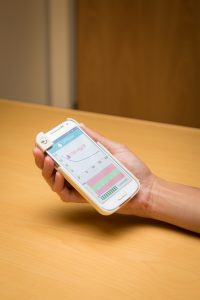 Engineers at the University of California San Diego have developed a smartphone case and app that could make it easier for patients to record and track their blood glucose readings, whether they’re at home or on the go.
Engineers at the University of California San Diego have developed a smartphone case and app that could make it easier for patients to record and track their blood glucose readings, whether they’re at home or on the go.
Currently, checking blood sugar levels can be a hassle for people with diabetes, especially when they have to pack their glucose monitoring kits around with them every time they leave the house.
“Integrating blood glucose sensing into a smartphone would eliminate the need for patients to carry a separate device,” said Patrick Mercier, a professor of electrical and computer engineering at UC San Diego. “An added benefit is the ability to autonomously store, process and send blood glucose readings from the phone to a care provider or cloud service.”
The device, called GlucPhone, is a new proof-of-concept portable glucose sensing system developed by Mercier, nanoengineering professor Joseph Wang, and their colleagues at the UC San Diego Jacobs School of Engineering. Wang and Mercier are the director and co-director, respectively, of the Center for Wearable Sensors at UC San Diego. Their team published the work in Biosensors and Bioelectronics.
You can read more about this technology here.
Three papers accepted to ISSCC 2018!
 Congratulations to Sally Safwat Amin, who will be presenting a paper at the 2018 International Solid-State Circuits Conference (ISSCC) on a multi-input single-inductor multi-output (MISIMO) energy harvesting system. The paper is entitled “MISIMO: A Multi-Input Single-Inductor Multi-Output Energy Harvester Employing Event-Driven MPPT Control to Achieve 89% Peak Efficiency and a 60,000× Dynamic Range in 28nm FDSOI”.
Congratulations to Sally Safwat Amin, who will be presenting a paper at the 2018 International Solid-State Circuits Conference (ISSCC) on a multi-input single-inductor multi-output (MISIMO) energy harvesting system. The paper is entitled “MISIMO: A Multi-Input Single-Inductor Multi-Output Energy Harvester Employing Event-Driven MPPT Control to Achieve 89% Peak Efficiency and a 60,000× Dynamic Range in 28nm FDSOI”.
Congratulations also to Loai Salem, who will be presenting a paper on a new digital LDO that realizes the resistive drop via a frequency-modulated switched-capacitor resistor. The paper, entitled “A Sub-1.55mV-Accuracy 36.9ps-FOM Digital-Low-Dropout Regulator Employing Switched-Capacitor Resistance” achieves a very fast response time with excellent regulation accuracy.
Also, congratulations to Ali Fazli Yenmaki, along with co-authors Xiaoyang Wang, Somayeh Imani, Ali Nikoofard, Itthipon Jeerapan, and collaborator Prof. Joseph Wang (Nanoengineering), on the paper entitled “A 0.3V Biofuel-Cell-Powered Glucose/Lactate Biosensing System Employing a 180nW 64dB SNR Passive ΔΣ ADC and a 920MHz Wireless Transmitter”. This exciting paper will discuss how to use energy naturally present in glucose and lactate to form a self-powered physiochemical monitoring system.
More information about these papers will be available at ISSCC in San Francisco, CA in February 2018, and online on IEEE Xplore after the conference.
Finally, Prof. Mercier is a co-organizer of Forum #4: Circuit and System Techniques for mm-Wave Multi-Antenna Systems, which will feature exciting talks by a number of experts in the area – please be sure to attend if you are interested in such work.
